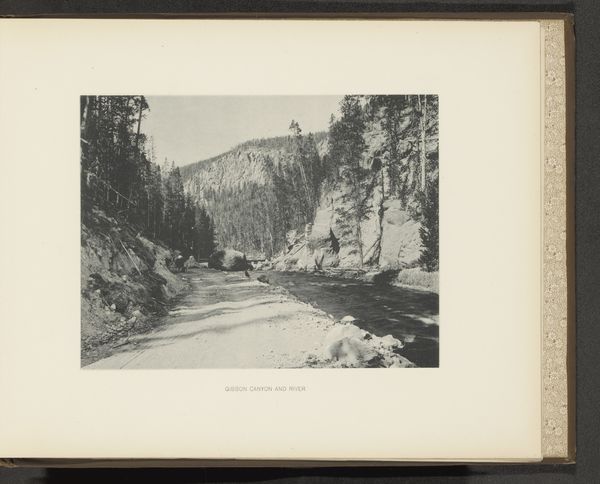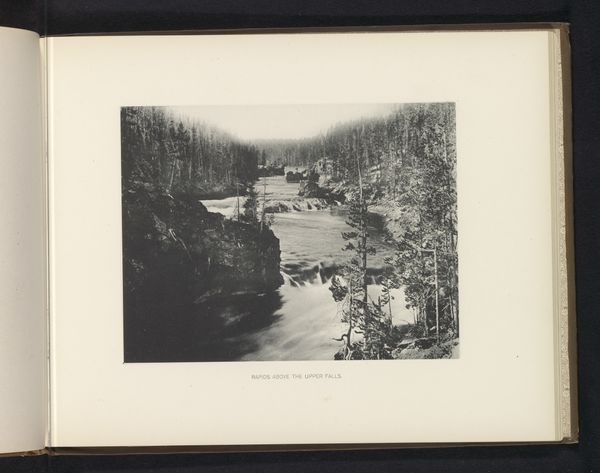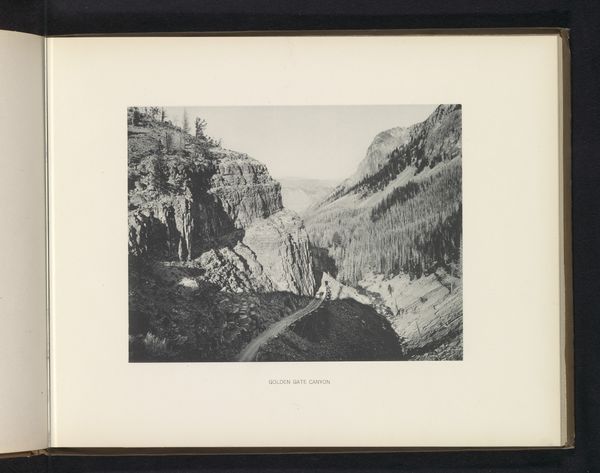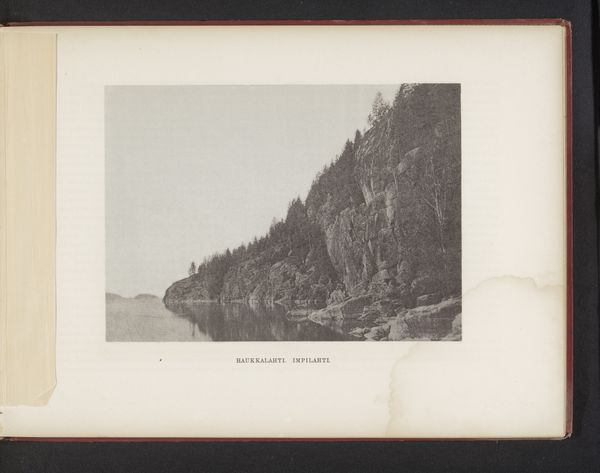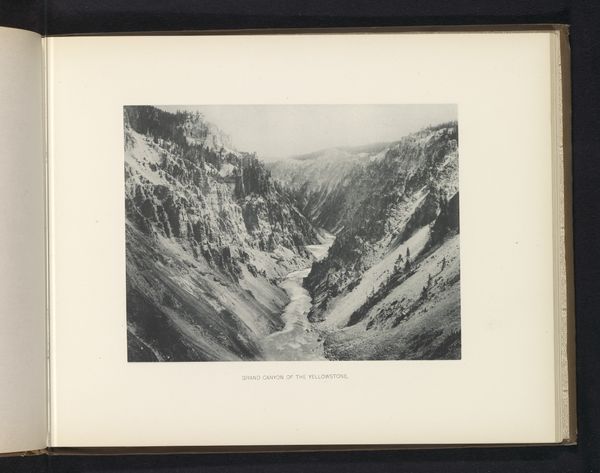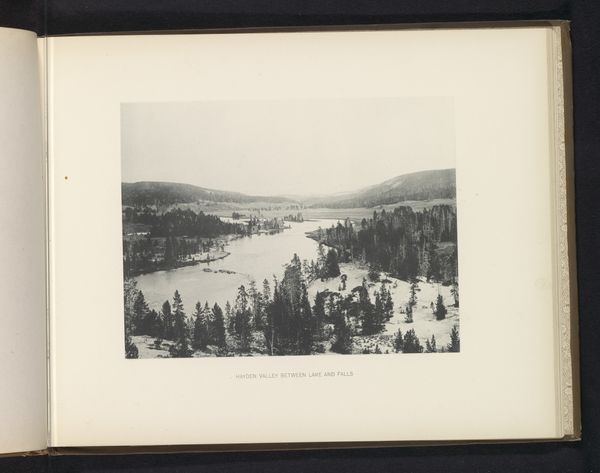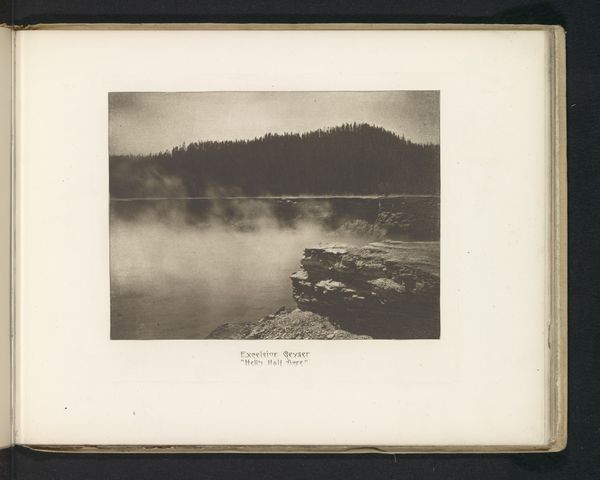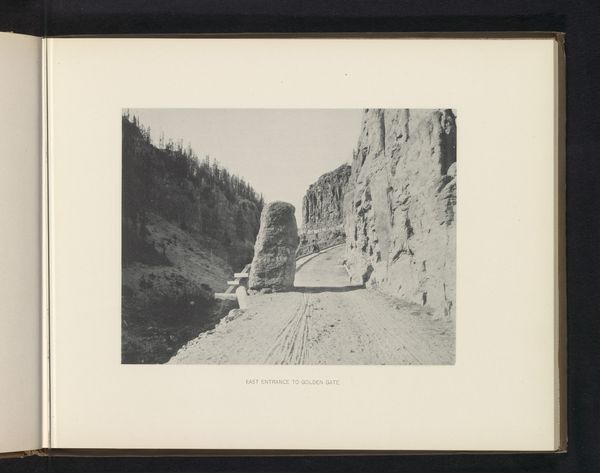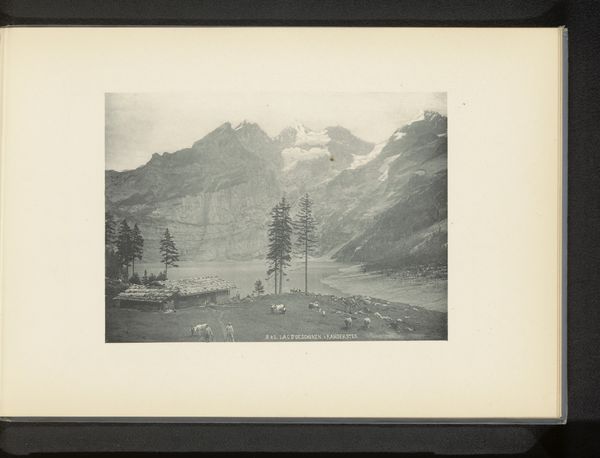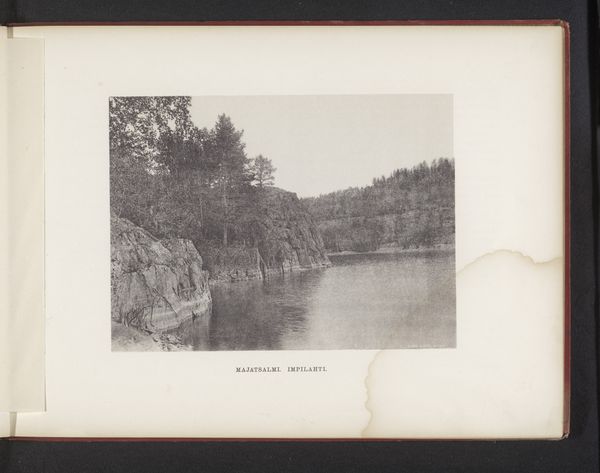
Dimensions: height 165 mm, width 215 mm
Copyright: Rijks Museum: Open Domain
Editor: Here we have Frank Jay Haynes' photograph, "Obsidian Cliff, Beaver Lake," captured before 1891. The gelatin-silver print is incredibly detailed, showcasing the reflection of the cliff face in the still water. What strikes me most is the balance between light and dark, and that glassy smooth lake! What draws your eye? Curator: The mirrored image certainly commands attention. Beyond the purely visual, reflections in art often serve as powerful symbols. What do you see reflected, and what isn't there? Consider how the "Obsidian Cliff" speaks to geological permanence, echoed – and perhaps softened – in the ephemeral water. Think of how landscape painting from the Hudson River School tried to capture not just the scenery, but some feeling of the sublime. Does that resonance come through here? Editor: Definitely. The detail in the cliff, almost geological, is very striking, while the water seems much smoother. There's a sense of time passing… geological time, maybe? The cliff could represent enduring strength, the water reflection perhaps represents how humans reflect on the beauty of the landscape. Curator: An insightful interpretation! How interesting to consider both time scales at work, both in Haynes' image, and the scene it presents. Haynes’ decision to capture this particular vista would also have specific intent. Early photographers like Haynes played a crucial role in shaping perceptions of the American West. Images of Yellowstone, like this, fueled both a sense of national pride, and awareness of our need to steward its wonders. What kind of emotion do you associate with that interplay? Editor: It brings to mind the importance of conservation, seeing how powerful nature is but also understanding the role we play in preserving it. That makes me think differently about landscape photography in general. Curator: Precisely. Photographs such as this helped encode nature into the American identity, embedding landscape as intrinsic to our shared cultural memory.
Comments
No comments
Be the first to comment and join the conversation on the ultimate creative platform.
